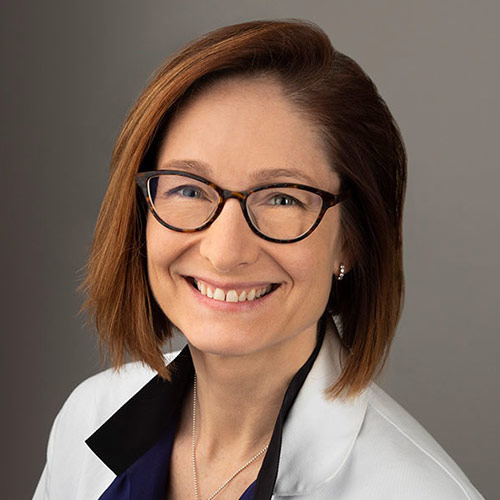-
- Find Care
-
- Visitor Information
- Find a Location
- Shuttles
- Visitor Policies
-
-
- Our Virtual Care Options
- Virtual Urgent Care
- Virtual Visits for Primary & Specialty Care
- Online Second Opinions
- Participate in Research
-
- Contact us
-
- For Innovators
- Commercialization Guide for Innovators
-
-
- Research News
- Alzheimer's Disease
- Artificial Intelligence
-
- Overview
-
- Overview
- Getting Started
- New to Mass General Brigham
- International Patient Services
- What Is Patient Gateway?
- Planning Your Visit
- Find a Doctor (opens link in new tab)
- Appointments
- Patient Resources
- Health & Wellness
- Flu, COVID-19, & RSV
- Billing & Insurance
- Financial Assistance
- Medicare and MassHealth ACOs
- Participate in Research
- Educational Resources
- Visitor Information
- Find a Location
- Shuttles
- Visitor Policies
- Find Care
-
- Overview
- Our Virtual Care Options
- Virtual Urgent Care
- Virtual Visits for Primary & Specialty Care
- Online Second Opinions
-
- Overview
- Participate in Research
-
- Overview
- About Innovation
- About
- Team
- News
- For Industry
- Venture Capital and Investments
- World Medical Innovation Forum (opens link in new tab)
- Featured Licensing Opportunities
- For Innovators
- Commercialization Guide for Innovators
- Contact us
-
- Overview
- Information for Researchers
- Compliance Office
- Research Cores
- Clinical Trials
- Advisory Services
- Featured Research
- Two Centuries of Breakthroughs
- Advances in Motion (opens link in new tab)
- Brigham on a Mission (opens link in new tab)
- Gene and Cell Therapy Institute
- Research News
- Alzheimer's Disease
- Artificial Intelligence
-
- Overview
-
- Overview
- Residency & fellowship programs
- Brigham and Women's Hospital
- Massachusetts General Hospital
- Mass Eye and Ear
- Newton-Wellesley Hospital
- Salem Hospital
- Integrated Mass General Brigham Programs
- Centers of Expertise
- Global & Community Health
- Health Policy & Management
- Healthcare Quality & Patient Safey
- Medical Education
- For trainees
- Prospective trainees
- Incoming trainees
- Current trainees
- Continuing Professional Development
Endometriosis Care: Facing the Missed Disease

Content warning: Discussion of menstruation and fertility
Each month, millions of people around the world menstruate (get their period). Yet, periods are a taboo topic. Menstruators ask each other for tampons in hushed voices. They invent covert nicknames (like “Aunt Flo”). Sometimes, they suffer pain in silence because they’re taught that it’s normal.
But severe period pain isn’t normal. In fact, it could be a sign of endometriosis.
Louise Perkins King, MD, JD, is a Mass General Brigham gynecologic surgeon who practices in the Division of Minimally Invasive Gynecology Surgery at Brigham and Women’s Hospital. She is also the mother of a daughter diagnosed with endometriosis.
“I see a lot of patients who need aggressive endometriosis treatment because of where I am and how I specialize,” she says, “but I never expected it to affect my daughter in that way.”
Dr. King’s experiences as a parent and health care provider help her weave expertise and genuine empathy into her practice. She knows what’s important for the best possible patient experience. And she sees the barriers to endometriosis treatment — which often form with a person’s first symptoms.
The missed disease
Endometriosis is a disease that can begin as soon as a person’s first period. It happens when tissues similar to those in the uterine lining grow in other places. Endometriosis is a lifelong condition that can become more painful with time and may affect fertility.
It can take as long as 7 to 10 years for a person to be diagnosed with endometriosis, and at least as long to find effective endometriosis treatment options. There are a lot of factors that contribute to that delay — including, importantly, the fact that period-related pain is often “normalized” by doctors and society. That’s why endometriosis is sometimes called the “missed disease.”
Different people experience endometriosis differently. Some people with endometriosis feel severe pain and cramps, while others may only feel mild discomfort. In the case of Dr. King’s teenage daughter, the pain has been intense and life-changing.
“You really can’t understand endometriosis until you live it,” she says. “My daughter went from being this athletic swimmer to someone who can barely exercise. I have a lot more empathy now that I see her live through it day-to-day.”
“I wish that weren’t the case,” she adds. “As humans, I wish we always had utmost empathy. But I’ve found my daughter’s experience makes me better able to hear my own patients.”
Endometriosis symptoms
Although endometriosis symptoms can vary, there are some symptoms common to the condition. These include:
- Heavy or light bleeding during periods
- Pain during or after sex
- Chronic pelvic pain
- Pain while going to the bathroom
- Chronic fatigue
- Bloating, constipation, and diarrhea
- Depression and social isolation
Endometriosis can also make it difficult to get pregnant or cause infertility.
If you experience any pain that interferes with your daily life, it’s important to talk to your primary care provider (PCP) or gynecologist and consider referral to a specialist. They can help you find the cause of, and manage, your pain.
Barriers to endometriosis treatment
“As compared to other disease processes, we don’t know much about endometriosis,” explains Dr. King. “We don’t know how it starts or why it creates pain in some people and not others. We don’t know why it grows fast in some people and more slowly in others.”
A good part of the reason we don’t know more about endometriosis is that there has been limited funding available for research. That’s at the root of other barriers to endometriosis treatment, like:
- A lack of effective, accessible endometriosis treatment options. Right now, endometriosis patients have few options.
“Pharmaceutical companies have designed drugs that work for a year or so, but it’s a lifelong disease,” says Dr. King. “Many patients respond well to oral birth control — but birth control pills have side effects that are intolerable for some people,” she adds. Patients also may respond well to surgery, but there’s a lack of funding for surgical studies. This means researchers can’t address important topics that could perfect surgical treatment for endometriosis.
- Systemic racism in health care. Black and Hispanic menstruators are less likely than white menstruators to be diagnosed with endometriosis, Dr. King explains. But given the available incidence data, it’s hard to tell whether that’s due to biology or because of the history of racism in health care and underdiagnosis. Mass General Brigham is committed to making clinical care more equitable.
- Inequities in health insurance coverage. When it comes to insurance coverage, women face challenges. They may pay higher rates for insurance. They may put a higher percentage of their income toward it.
In addition, as Dr. King says, “Women often engage in employment on a part-time basis because of family duties; they may not have insurance, or they may have Medicaid coverage which results in limits in their access to care.”
An integrated team and patient-centric care are key to endometriosis treatment
At Brigham and Women’s Hospital, ranked the best hospital for OB/GYN in the nation, patients with endometriosis benefit from a multidisciplinary team of highly trained subspecialists that includes:
- Endocrinologists
- Gastroenterologists
- General surgeons
- Radiologists
- Urologists
- Physical therapists
- Pain specialists
- Social workers
“Endometriosis is a complex diagnosis,” says Dr. King, “The ideal way to approach it is multidisciplinary care and an individualized approach. Patients with very refractory (difficult to treat) disease do best if they can access care from a team that includes multiple specialists. This might include pelvic floor therapists, endocrinologists, and surgeons, among others. Other patients respond well to good surgery and use of birth control pills. It’s about treating each patient as an individual and learning what they do and don’t need.”
That’s exactly how Dr. King and her colleagues at Mass General Brigham treat each of their endometriosis patients — as individuals with unique needs that will ensure their quality of life.
“My colleagues and I are very committed to our patients,” she says. “We make sure everybody gets the best possible care. We’re not about high throughput or how many cases we can get done at a time. We’re about: These people are suffering. How can we best help them?”
“I love that,” she adds.
A commitment to patient-centered care comes together with the expert surgical care skill that sets the Mass General Brigham system apart. “We have some of the most advanced surgeons in town for endometriosis care,” says Dr. King. “We are the system and the place to go.”
